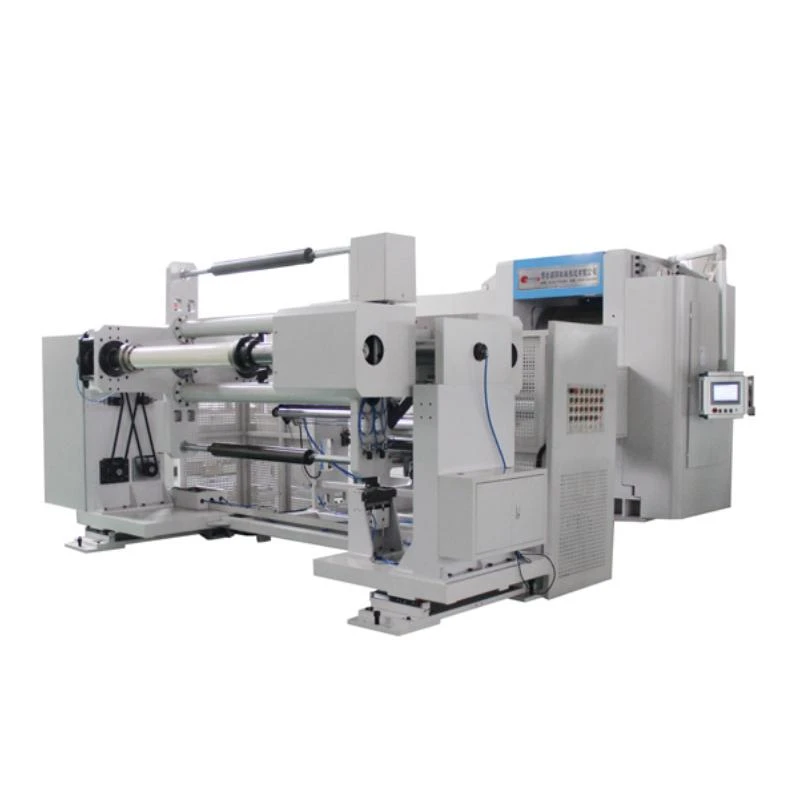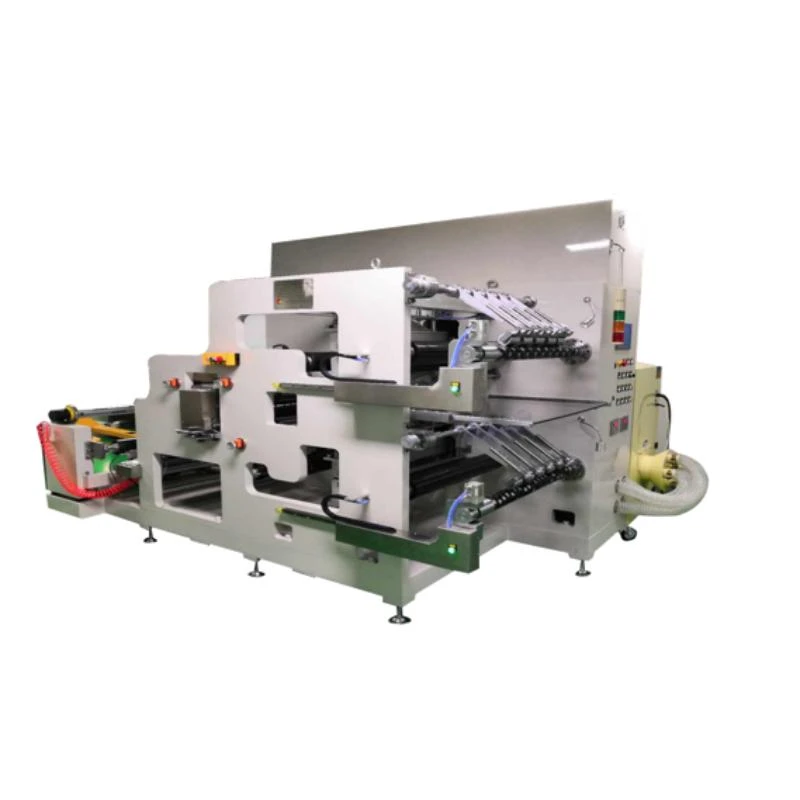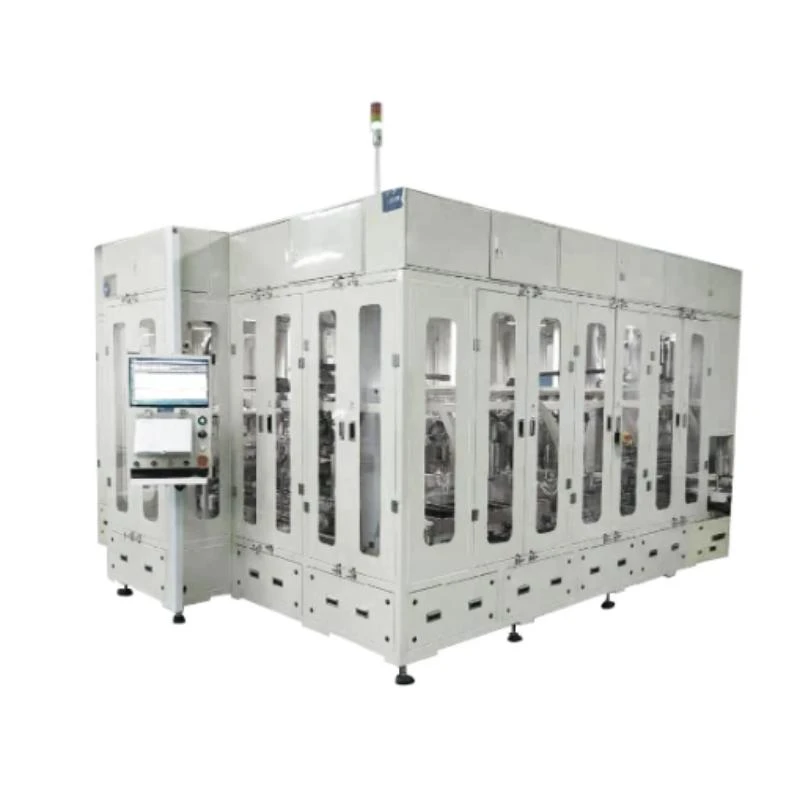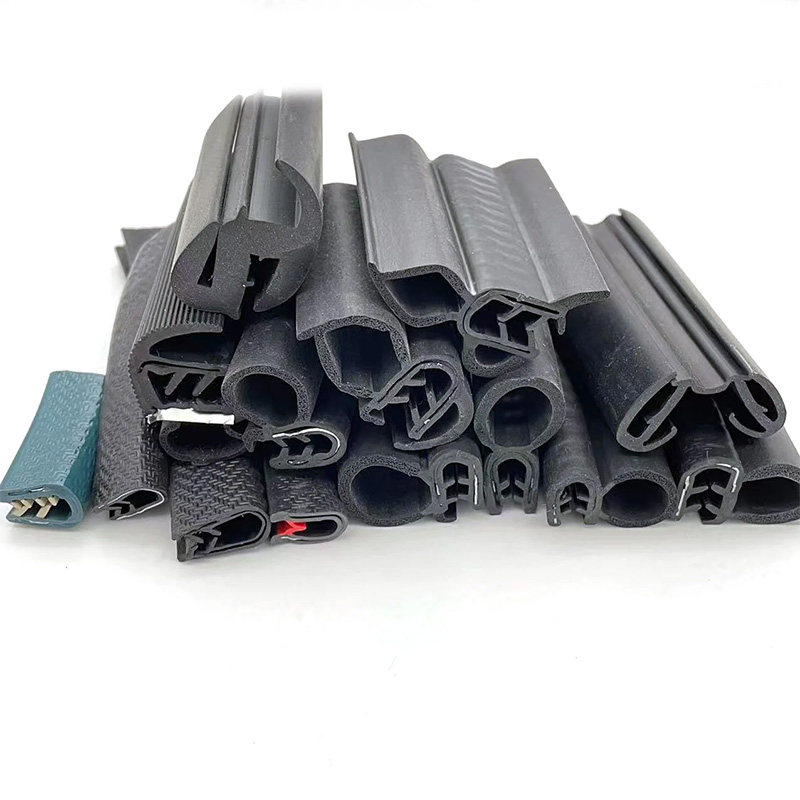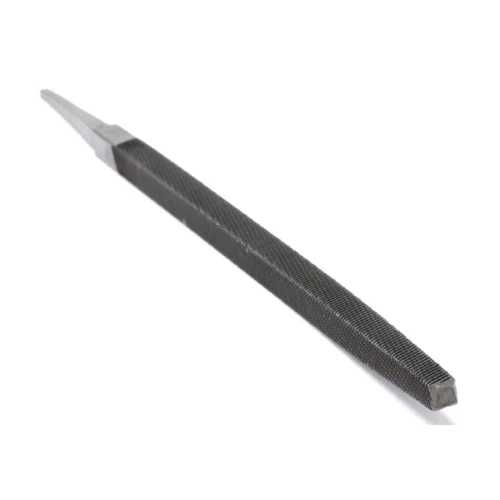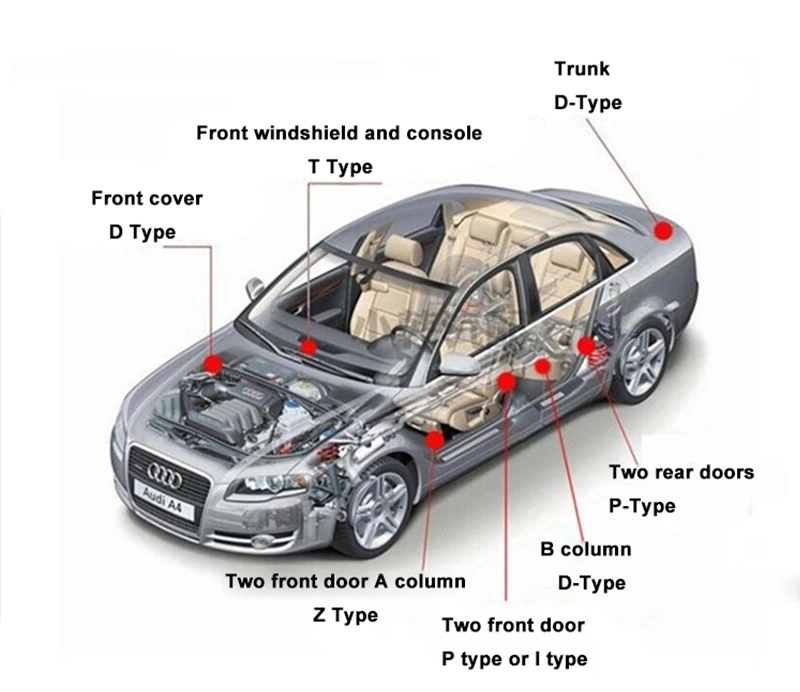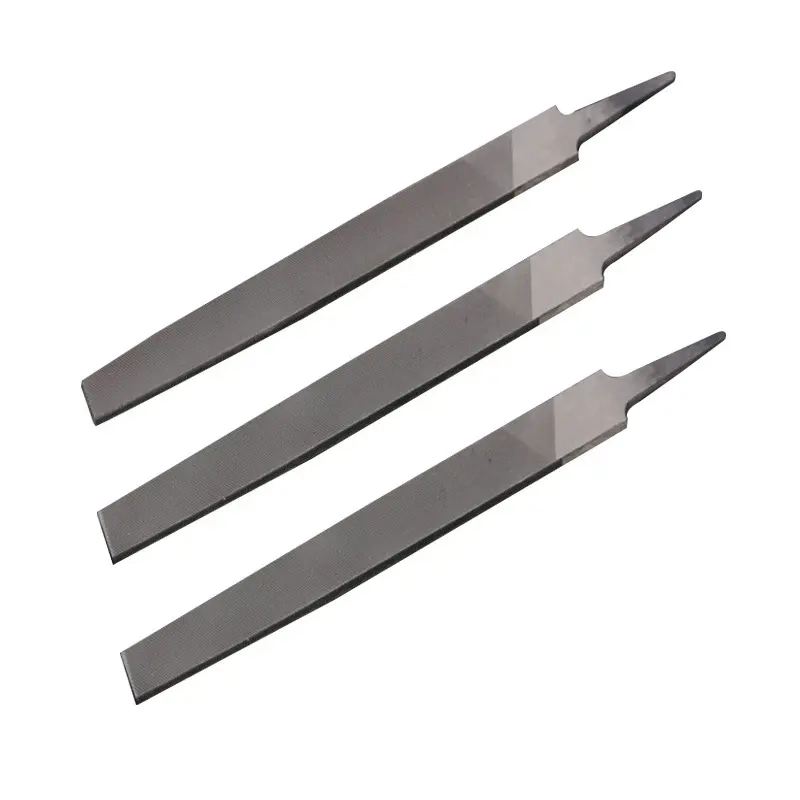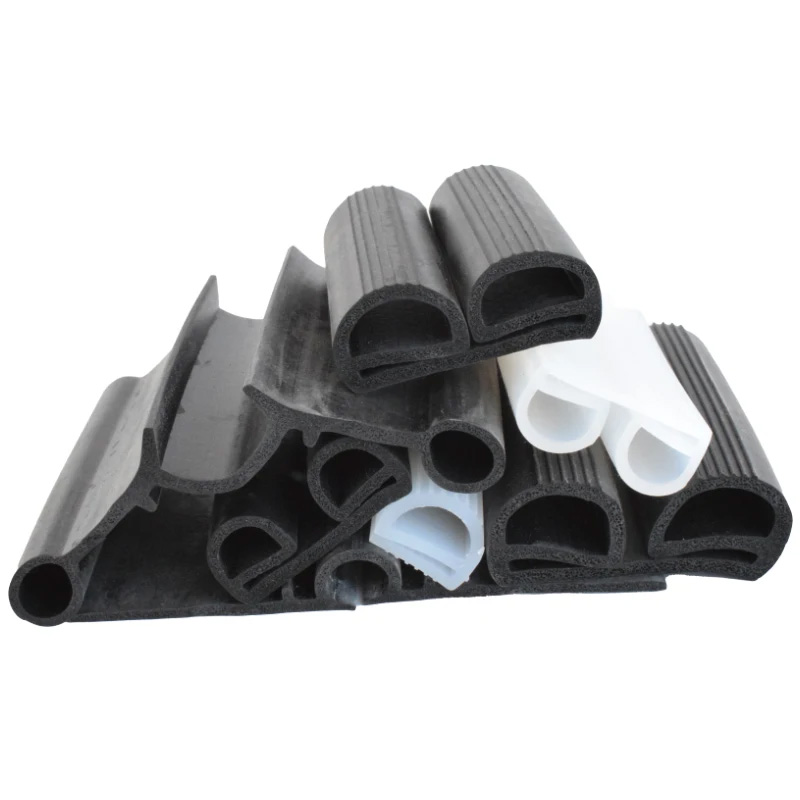Lithium Ion Battery Assembly Machine: Precision & Efficiency
The Crucial Role of Automated lithium ion battery assembly machine in Modern Manufacturing
The global demand for high-performance energy storage solutions has never been more pronounced, driven primarily by the rapid expansion of electric vehicles (EVs), renewable energy integration, and advanced portable electronics. At the heart of this revolution lies the lithium-ion battery, a sophisticated energy device whose quality and cost-effectiveness are inextricably linked to its manufacturing process. A robust lithium ion battery assembly machine is not merely a piece of equipment; it is the cornerstone of efficient, precise, and scalable battery production.
Modern battery production lines, often referred to as a complete lithium battery production line or battery production line, rely heavily on automation to meet stringent quality control, high throughput demands, and the complex intricacies of cell assembly. From the initial processing of raw materials to the final testing of battery packs, each stage requires meticulous precision to ensure optimal performance, longevity, and safety of the final product. Advanced lithium battery equipment facilitates this by integrating multiple complex operations into a seamless, high-speed workflow.
This comprehensive overview delves into the critical aspects of the lithium ion battery assembly machine, exploring its technical parameters, the evolving industry trends it addresses, its diverse application scenarios, and the profound technical advantages it offers. We will also examine the manufacturing process of these sophisticated machines, highlight key differentiating factors among manufacturers, discuss the possibilities of customized solutions, and present compelling application cases to illustrate their real-world impact. Ultimately, understanding the nuances of a sophisticated lithium ion battery production line is essential for any enterprise looking to excel in the competitive energy storage market.
Industry Trends Driving the Evolution of lithium ion battery assembly machine Technology
The landscape of lithium-ion battery manufacturing is constantly evolving, propelled by several macro-trends that directly influence the design and capabilities of the lithium ion battery assembly machine:
- Increased Automation and Industry 4.0 Integration: There is a pervasive shift towards fully automated and integrated battery production lines. This includes the adoption of robotics, AI-driven process optimization, real-time data analytics, and IoT connectivity for predictive maintenance and remote diagnostics. The goal is to minimize human intervention, reduce errors, and enhance overall efficiency and consistency in the battery production line.
- Higher Energy Density and Faster Charging: Consumers and industries demand batteries with longer ranges and quicker charging times. This translates to more complex cell chemistries and geometries, requiring assembly machines capable of handling new materials and designs with even greater precision. The intricate internal structures of high-density cells necessitate advanced lithium battery equipment for accurate stacking or winding.
- Enhanced Safety Standards: Battery safety remains paramount. Manufacturing defects are a significant cause of battery failures, including thermal runaway. Therefore, assembly machines are incorporating more sophisticated inline quality control, non-destructive testing, and stringent process monitoring to detect even minute imperfections during the assembly of lithium-ion cells.
- Scalability and Modularity: As battery demand surges, manufacturers need the flexibility to rapidly scale production. This drives the trend towards modular lithium ion battery assembly machine designs that can be easily expanded or reconfigured to meet varying production volumes and different battery formats (cylindrical, prismatic, pouch cells).
- Sustainability and Material Efficiency: Growing environmental concerns push for reduced material waste, energy consumption, and the use of sustainable materials in manufacturing. Modern assembly machines are designed for optimized material utilization and minimized scrap rates, contributing to a more sustainable lithium battery production line.
- Localization of Supply Chains: Geopolitical factors and the desire for greater supply chain resilience are encouraging the establishment of battery manufacturing facilities closer to end markets. This fuels demand for readily deployable and adaptable lithium battery equipment that can be integrated into diverse global manufacturing ecosystems.
These trends underscore the need for continuous innovation in lithium ion battery assembly machine technology, ensuring that equipment providers can deliver solutions that are not only efficient and precise but also adaptable, intelligent, and sustainable.
Technical Parameters and Specifications of a Leading lithium ion battery assembly machine
The effectiveness of a lithium ion battery assembly machine is defined by its technical specifications, which dictate its performance, precision, and suitability for various production requirements. Below is a detailed table outlining typical parameters for a high-performance assembly machine, representative of advanced lithium battery equipment:
| Parameter Category | Specific Parameter | Typical Range / Value | Importance / Explanation |
|---|---|---|---|
| Machine Type | Applicable Cell Formats | Pouch, Prismatic, Cylindrical (e.g., 18650, 21700, 4680) | Defines the versatility of the battery production line for different battery products. |
| Assembly Method | Z-folding Stacking, Winding, Lamination | Critical for cell performance and energy density. Stacking offers better energy density for prismatic/pouch. | |
| Performance | Production Speed | 15-30 PPM (cells/minute) for stacking; 5-10 PPM for large cells | Throughput capacity of the lithium ion battery production line. |
| Assembly Precision | ±20 µm to ±50 µm (electrode alignment) | Directly impacts battery performance, cycle life, and safety. Higher precision reduces internal shorts. | |
| Yield Rate | >98% - 99.5% | Minimizes material waste and rework, reducing overall production cost. | |
| Automation & Control | Control System | PLC (Siemens, Rockwell), HMI, SCADA compatibility | Enables precise control, data logging, and integration into factory management systems. |
| Vision System | Integrated high-resolution cameras, AI-powered defect detection | Ensures accurate alignment, identifies material flaws, enhances quality control. | |
| Connectivity | Ethernet/IP, Profinet, OPC UA, Remote Access | Facilitates Industry 4.0 integration, data exchange, and remote support. | |
| Environmental | Cleanroom Compatibility | Class 1000 (ISO 6) to Class 100 (ISO 5) | Essential to prevent contamination that can compromise battery performance and safety. |
| Humidity/Temperature Control | Integrated dry air systems (dew point | Moisture reacts negatively with lithium-ion battery components, requiring strict environmental control. | |
| Physical & Utility | Footprint | Variable, modular design (e.g., 5m x 3m x 2.5m for a single module) | Consideration for factory layout and space optimization. |
| Power Requirements | AC 380V/50Hz, 3-phase, 30-50 kW typical | Energy consumption and infrastructure compatibility. | |
| Air Pressure Requirements | 0.5-0.7 MPa, dry compressed air | Required for pneumatic actuators and various machine functions. |
These parameters are crucial for evaluating and selecting the most suitable lithium ion battery assembly machine for a specific production requirement, balancing throughput, precision, and operational costs within the complete lithium battery production line.
Detailed Process Flow and Engineering of the lithium ion battery assembly machine
The construction of a high-precision lithium ion battery assembly machine is itself a testament to advanced manufacturing capabilities. The machine's design and fabrication are as critical as the batteries it produces. Here’s a breakdown of its internal manufacturing processes and the standards adhered to:
Materials and Component Sourcing:
The structural integrity and long-term reliability of a lithium ion battery assembly machine begin with the selection of premium materials. High-grade aluminum alloys (e.g., 6061-T6 for frames) are commonly used for their excellent strength-to-weight ratio and corrosion resistance. Precision steel (e.g., SUS304 stainless steel for critical components exposed to potential corrosives) is employed for moving parts and structural elements requiring high rigidity. Specialty polymers and ceramics are utilized for components requiring electrical insulation, wear resistance, or low friction in sensitive areas.
Manufacturing Processes of the Machine's Components:
- CNC Machining: Core components requiring extreme precision, such as robot arms, alignment platforms, and tooling fixtures, are produced using multi-axis CNC (Computer Numerical Control) machining. This ensures micron-level accuracy, critical for electrode alignment and consistent cell assembly. Complex geometries for vacuum systems and pneumatic manifolds are also typically CNC-milled from solid blocks.
- Precision Grinding and Polishing: Surfaces that interact with delicate battery materials (e.g., electrodes, separators) undergo precision grinding and polishing to achieve exceptionally smooth finishes, minimizing friction and preventing damage to the sensitive materials. This also reduces particle generation, which is crucial for cleanroom environments.
- Laser Cutting and Welding: For precise fabrication of sheet metal enclosures and non-stress-bearing components, laser cutting offers high accuracy and minimal material distortion. Laser welding is often used for joining specific metal parts where high strength and minimal heat-affected zones are required, ensuring structural integrity of the lithium battery equipment.
- Casting and Forging (for heavy-duty sub-components): While not extensively used for the main assembly, some heavy-duty sub-components like large base frames or specialized tooling inserts might utilize casting or forging processes to achieve superior strength and durability, followed by extensive machining.
- Surface Treatments: Components are often subjected to various surface treatments, including anodizing for aluminum (enhancing corrosion resistance and hardness), nickel plating for steel (for wear resistance and corrosion protection), and specialized coatings (e.g., PVD, DLC) to reduce friction or provide anti-static properties.
Rigorous Inspection Standards and Quality Control:
Adherence to international standards is paramount for the credibility and performance of a lithium ion battery assembly machine:
- ISO 9001:2015 Certification: This widely recognized quality management system standard ensures that the manufacturing processes of the assembly machine consistently meet customer and regulatory requirements, fostering continuous improvement.
- ANSI/RIA R15.06: For robotic systems integrated into the assembly machine, adherence to industrial robot safety standards is critical to ensure operator safety and compliance in the battery production line environment.
- CE Marking: For machines destined for the European market, CE marking signifies conformity with health, safety, and environmental protection standards.
- Factory Acceptance Testing (FAT) and Site Acceptance Testing (SAT): Before shipment, each machine undergoes extensive FAT at the manufacturer's facility, simulating real-world production conditions. Upon installation, SAT is performed at the client's site to verify performance in the operational environment.
- Precision Metrology: Components are verified using advanced metrology equipment such as CMM (Coordinate Measuring Machines), laser trackers, and optical comparators to ensure they meet exact dimensional tolerances.
Projected Service Life and Applicable Industries:
A well-engineered lithium ion battery assembly machine is built for longevity and continuous operation, often exceeding a service life of 15 years with proper maintenance. Key considerations for its lifespan include the durability of precision components, the robustness of control systems, and the quality of maintenance support.
The primary industries benefiting from these advanced assembly machines are those at the forefront of the energy transition and high-tech manufacturing:
- Electric Vehicle (EV) Manufacturing: This is the largest and fastest-growing segment, demanding large-scale, high-precision assembly lines for EV battery packs.
- Consumer Electronics: Production of batteries for smartphones, laptops, wearables, and other portable devices.
- Grid-Scale Energy Storage: Manufacturing large format batteries for renewable energy integration and grid stabilization.
- Industrial Robotics and AGVs: Powering autonomous systems in manufacturing and logistics.
- Medical Devices: Requiring compact, high-reliability batteries for implantable devices and portable medical equipment.
- Aerospace and Defense: Specialized applications requiring high energy density and extreme reliability.
In these typical application scenarios, the lithium ion battery assembly machine offers significant advantages:
- Energy Efficiency: Optimized motion control and energy recovery systems in the machine itself can reduce operational power consumption. More importantly, by producing high-quality batteries, the machine indirectly contributes to energy saving in end applications, as efficient batteries lead to longer range in EVs or extended device usage.
- Reduced Waste and Enhanced Yield: The extreme precision and integrated quality control systems minimize material waste and drastically improve the yield of good cells, leading to significant cost savings and environmental benefits in the lithium battery production line.
- Safety and Reliability: By ensuring highly consistent and precise assembly, the machine minimizes defects that could lead to battery safety issues (e.g., short circuits, thermal runaway), contributing to a safer final product.
This comprehensive approach to design, manufacturing, and quality control ensures that each lithium ion battery assembly machine delivers superior performance and reliability throughout its extensive operational lifespan.
Technical Advantages and Distinctive Features
The competitive edge of a lithium ion battery assembly machine lies in its advanced technical advantages, which translate directly into operational benefits for battery manufacturers. These advantages differentiate leading solutions in the market:
- Ultra-High Precision Alignment Systems: Utilizing advanced robotics, vision systems, and proprietary algorithms, these machines achieve electrode alignment accuracies down to ±20 µm. This micro-precision is vital for maximizing energy density, extending cycle life, and preventing internal short circuits in the finished battery cell. Such precision is a hallmark of superior lithium battery equipment.
- High-Speed, Continuous Operation: Unlike semi-automated solutions, a fully automatic lithium ion battery assembly machine is designed for non-stop, high-volume production. Integrated buffer systems, intelligent material handling, and optimized motion control minimize idle times, achieving production rates of 15-30 cells per minute for standard formats, significantly boosting the overall throughput of the battery production line.
- Integrated Real-time Quality Control: Beyond simple go/no-go checks, modern machines incorporate sophisticated inline quality inspection at every critical step. This includes optical inspection for electrode defects, thickness and coating uniformity measurement, tension control during winding/stacking, and automated tab welding integrity checks. Any deviation triggers immediate alerts or automatic rejection, ensuring only flawless cells proceed.
- Modular and Scalable Design: Leading manufacturers offer modular designs, allowing for easy expansion or reconfiguration of the assembly line. This flexibility is crucial for adapting to changing battery formats (e.g., from cylindrical to pouch cells), increasing production capacity, or integrating new technologies without a complete overhaul of the lithium ion battery production line.
- Advanced Environmental Control Integration: Recognizing the sensitivity of lithium-ion battery materials to moisture and contaminants, these machines are built for seamless integration into dry room and cleanroom environments (e.g., ISO Class 5/6). Features include sealed processing chambers, integrated dry air systems, and minimized particle generation, ensuring optimal assembly conditions.
- Smart Automation and Data Analytics: Leveraging Industry 4.0 principles, the machines feature advanced PLC and HMI interfaces, enabling comprehensive data logging, real-time performance monitoring, and predictive maintenance. This data-driven approach allows manufacturers to optimize processes, identify bottlenecks, and make informed decisions, improving overall equipment effectiveness (OEE).
- Versatile Material Handling: The ability to handle a wide range of electrode widths, lengths, and thicknesses, as well as various separator types, is a key advantage. This is facilitated by precise tension control systems, automated splicing, and intelligent feeder mechanisms, making the machine adaptable to diverse battery designs.
- Energy-Efficient Operation: Modern designs incorporate energy-saving features, such as optimized motor controls, regenerative braking for motion systems, and efficient vacuum/pneumatic systems, reducing the overall power consumption of the lithium battery equipment.
These technical advantages collectively ensure that a state-of-the-art lithium ion battery assembly machine not only meets but exceeds the rigorous demands of modern battery manufacturing, contributing to higher quality, safer, and more cost-effective energy storage solutions.
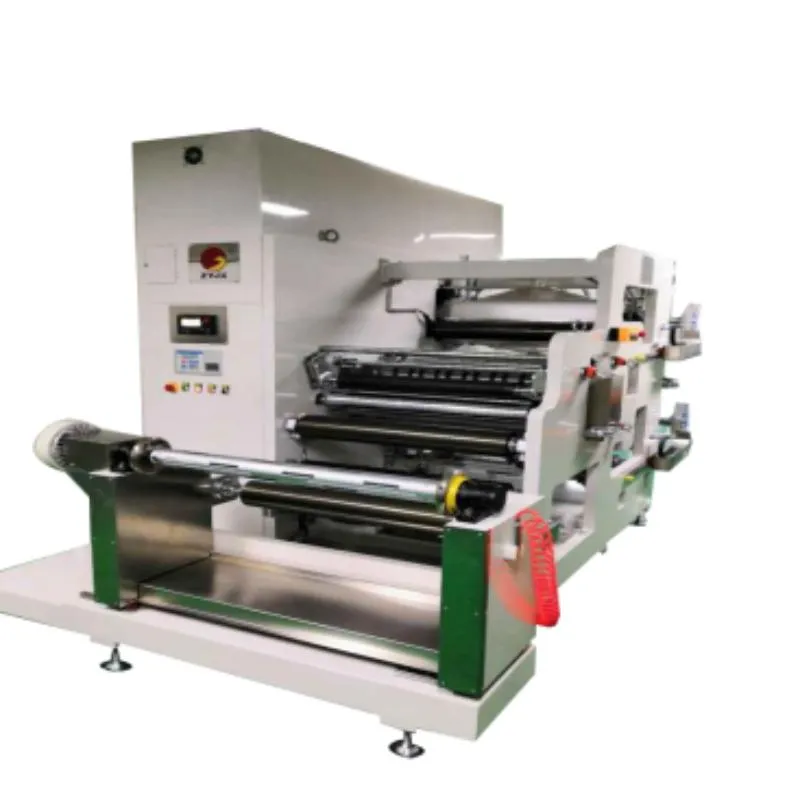
Application Scenarios Across Key Industries
The versatility and high performance of the lithium ion battery assembly machine make it indispensable across a spectrum of industries that rely on advanced energy storage. Its precision and scalability enable manufacturers to meet the stringent demands of various applications:
- Electric Vehicle (EV) Manufacturing: This sector is the largest driver of demand for sophisticated lithium ion battery assembly machine. From compact batteries for urban electric vehicles to large, high-capacity packs for long-range EVs and commercial electric trucks, the need for consistent, high-energy-density cells is paramount. Assembly machines ensure precise stacking or winding of electrodes, critical for safety and performance in the demanding automotive environment. They are central to the creation of efficient lithium ion battery production line for vehicle integration.
- Consumer Electronics: Smartphones, laptops, tablets, wearables, and power tools all rely on compact, high-performance lithium-ion batteries. The assembly machines used here are typically smaller but still require exceptional precision for intricate designs and high throughput to meet mass market demands. The ability to handle various cell formats (e.g., pouch cells for thin devices, cylindrical for power tools) is a key requirement.
- Grid-Scale Energy Storage Systems (ESS): With the expansion of renewable energy sources like solar and wind, large-scale battery storage solutions are vital for grid stability and energy management. These systems often utilize large prismatic or pouch cells. The lithium ion battery assembly machine contributes to the efficient production of these high-capacity cells, which form the backbone of grid-scale ESS, ensuring robust and long-lasting energy reserves.
- Industrial Automation and Robotics: Automated guided vehicles (AGVs), industrial robots, and other factory automation equipment require reliable and powerful battery packs to operate continuously. Assembly machines ensure the production of robust, long-cycle-life batteries that can withstand the rigors of industrial use, contributing to the efficiency of the manufacturing sector.
- Medical Devices: For life-critical applications such as implantable devices, portable medical equipment, and diagnostic tools, battery reliability is non-negotiable. Assembly machines designed for medical-grade battery production offer unparalleled precision and stringent quality control, minimizing the risk of failure and ensuring patient safety.
- Aerospace and Defense: Specialized battery applications in aerospace and defense demand extreme reliability, high power output, and resistance to harsh environmental conditions. The lithium battery equipment used for these applications must meet the most rigorous certification standards, ensuring that every assembled cell performs flawlessly under critical circumstances.
In each of these sectors, the capabilities of the lithium ion battery assembly machine directly influence product performance, market competitiveness, and ultimately, the successful deployment of advanced battery technologies.
Manufacturer Comparison: Choosing the Right Partner for Your lithium ion battery production line
Selecting the optimal supplier for a lithium ion battery assembly machine is a critical decision that impacts long-term operational efficiency and product quality. Beyond technical specifications, a holistic comparison includes evaluating experience, support, and customization capabilities. Here's a comparison framework, highlighting key differentiators:
| Feature / Criterion | Leading Provider (e.g., Our Company) | Competitor B (Mid-Tier) | Competitor C (Emerging/Budget) |
|---|---|---|---|
| Experience & Specialization | 15+ years in battery equipment, focus on power & EV batteries. Deep R&D. | 8-10 years, broader industrial automation. | 5 years, general automation, some battery sector. |
| Automation Level & Precision | Fully automatic, µm-level precision (±20µm), integrated QC. | Mostly automatic, mm-level precision, limited inline QC. | Semi-automatic or basic automation, higher tolerance. |
| Technology & Innovation | Proprietary vision systems, AI-driven process optimization, modular design. Patents. | Standard automation components, some customization. | Off-the-shelf components, basic functionality. |
| Customer Support & Service | Global 24/7 support, remote diagnostics, rapid on-site response, extensive spare parts. | Regional support, slower response, basic spare parts. | Limited support, often via distributor, long lead times for parts. |
| Customization & Flexibility | Highly customizable solutions, integration with existing lines, adaptable to new cell formats. | Some standard configuration options. | Minimal to no customization. |
| Certifications & Compliance | ISO 9001, CE, UL/ETL compliant options, comprehensive FAT/SAT. | Basic CE/ISO, less rigorous testing. | May lack international certifications. |
| Total Cost of Ownership (TCO) | Higher initial investment, but lower long-term operating costs due to high yield, minimal downtime, and efficiency. | Mid-range initial cost, potential for higher TCO due to lower yield or more maintenance. | Lower initial cost, but significantly higher TCO from low yield, frequent breakdowns, and limited support. |
For a company seeking to establish a high-performance lithium ion battery production line, investing in a leading provider offers not just advanced lithium battery equipment but a strategic partnership that ensures long-term success, consistent quality, and efficient scaling of production.
Customized Solutions for Unique Production Requirements
While standard configurations of a lithium ion battery assembly machine cater to common production needs, many manufacturers face unique challenges related to proprietary cell designs, space constraints, or integration with existing infrastructure. This is where the ability to provide customized solutions becomes a significant competitive advantage for lithium battery equipment suppliers.
A truly customer-centric provider of lithium ion battery assembly machine collaborates closely with clients to engineer bespoke solutions. This often involves a multi-stage process:
- Detailed Needs Assessment: Initial consultations involve understanding specific cell chemistries, dimensions, desired throughput, cleanroom requirements, existing automation levels, and future expansion plans. This ensures that the proposed lithium ion battery production line truly aligns with the client's strategic goals.
- Modular Design & Configuration: Leveraging modular component design, sections of the assembly machine (e.g., electrode feeding, stacking/winding, tab welding, packaging) can be reconfigured or custom-built. This might include adapting for unusual cell sizes (e.g., very large format prismatic cells for marine applications or extremely small cells for micro-devices) or specialized material handling systems.
- Software and Control System Tailoring: The machine's control software can be tailored to specific operational protocols, data logging requirements, or integration with the client’s existing Manufacturing Execution System (MES) or ERP. Custom algorithms can be developed for unique quality control parameters or process optimizations.
- Integration with Ancillary Equipment: A customized solution can seamlessly integrate the lithium ion battery assembly machine with upstream processes (e.g., coating, calendering, slitting – like the Fully automatic power slitting machine) and downstream processes (e.g., electrolyte filling, formation, sorting, module assembly). This ensures a cohesive and highly efficient battery production line.
- Environmental Adaptations: For facilities with unique environmental controls or space limitations, the machine can be designed to fit specific cleanroom classifications, humidity levels, or compact footprints without compromising performance.
- Prototyping and Simulation: For highly custom projects, virtual simulations or even physical prototyping of critical modules can be undertaken to validate design efficacy and performance before full-scale manufacturing.
The result of a well-executed customized solution is a lithium ion battery assembly machine that is perfectly optimized for the client’s unique manufacturing ecosystem, maximizing efficiency, minimizing waste, and accelerating time-to-market for innovative battery products. This bespoke approach fosters strong, long-term partnerships, ensuring clients receive not just equipment but a competitive manufacturing advantage.
Compelling Application Cases and Success Stories
The real-world impact of a high-performance lithium ion battery assembly machine is best illustrated through its application in diverse manufacturing environments. These cases demonstrate how advanced lithium battery equipment transforms production capabilities and accelerates market leadership.
Case Study 1: Scaling EV Battery Production for a Global Automaker
A leading global automotive manufacturer, facing intense pressure to ramp up EV production, required a significant upgrade to their existing lithium ion battery production line. Their primary challenge was increasing cell assembly throughput while maintaining stringent quality and safety standards for large prismatic cells (e.g., 100Ah+). They sought a partner capable of delivering a high-speed, high-precision lithium ion battery assembly machine solution.
Our solution involved implementing a series of fully automated stacking machines with advanced vision systems for electrode alignment (achieving ±25µm precision even at high speeds). The machines were integrated with a smart material handling system, including automated guided vehicles (AGVs) for seamless transport of materials from electrode slitting to assembly. Real-time data analytics provided by the machine's control system allowed the automaker to monitor OEE, identify bottlenecks, and perform predictive maintenance.
Results: Within 12 months, the client reported a 40% increase in daily cell production capacity, a 1.5% improvement in final cell yield (due to reduced assembly defects), and a significant reduction in labor costs associated with assembly. The enhanced precision led to higher consistency in battery performance metrics, contributing to improved EV range and longevity.
Case Study 2: Enabling Next-Generation Portable Electronics with Ultra-Thin Pouch Cells
A prominent consumer electronics company was developing a new line of ultra-thin devices, which necessitated equally thin and high-density pouch cells. Their existing battery production line struggled with the delicate handling and precise stacking required for these advanced electrodes, leading to high scrap rates and inconsistent cell thickness.
We provided a customized lithium ion battery assembly machine specifically designed for ultra-thin electrode handling. This included specialized vacuum suction mechanisms to prevent electrode damage, advanced tension control for the separator, and a unique Z-folding stacking process optimized for minimal stack height and maximum material utilization. The machine operated within an ISO Class 5 cleanroom environment, crucial for preventing contamination of the delicate materials.
Results: The client achieved a 99% yield rate for their challenging ultra-thin pouch cells, a dramatic improvement from their previous 85%. The precision assembly contributed directly to the desired form factor of their new devices, accelerating their market launch. The client also praised the machine's low particle generation and energy-efficient design, critical for their cleanroom operations.
Case Study 3: Optimizing Production for Grid-Scale Energy Storage Batteries
A utility-scale energy storage provider aimed to expand its manufacturing capabilities for large-format (e.g., 280Ah) prismatic cells, which form the building blocks of their grid batteries. Key challenges included maintaining uniformity across massive cell batches and ensuring long-term durability, as these batteries operate for decades in demanding outdoor environments. The previous semi-automated process was too slow and prone to human error, impacting consistency.
We implemented a robust, heavy-duty lithium ion battery assembly machine line featuring advanced laser welding for tab connections and a sophisticated automated sorting system post-assembly. The machine's design focused on robust construction, capable of continuous operation with minimal downtime. Its integrated monitoring system tracked every cell's assembly parameters, creating a digital twin for quality assurance and traceability throughout the lithium battery production line.
Results: The deployment of the new lithium battery equipment led to a doubling of daily production output for large cells. More importantly, the consistency in cell assembly significantly reduced internal resistance variation by 15% across batches, leading to more uniform battery packs and extended lifespan in grid applications. The enhanced traceability also streamlined their warranty and maintenance processes.
These case studies underscore the transformative power of a state-of-the-art lithium ion battery assembly machine. They illustrate not just improvements in speed and efficiency, but also profound impacts on product quality, operational costs, and market responsiveness, solidifying a manufacturer's position in the rapidly evolving battery industry.
Trustworthiness: FAQ, Delivery, Warranty, and Support
Establishing trust with B2B clients, particularly for high-value capital equipment like a lithium ion battery assembly machine, goes beyond technical specifications. It encompasses transparency in processes, robust support structures, and clear commitments. Our approach emphasizes complete trustworthiness throughout the client journey.
Frequently Asked Questions (FAQ)
- What types of lithium-ion cells can your lithium ion battery assembly machine handle?
Our machines are designed for versatility, capable of assembling cylindrical (e.g., 18650, 21700, 4680), prismatic, and pouch cells. Specific models are optimized for certain formats, and customization is available for unique geometries.
- What are the typical lead times for a complete lithium ion battery production line?
Lead times vary based on the complexity and customization level of the equipment. For standard configurations, it typically ranges from 4 to 6 months from contract signing to factory acceptance test (FAT). Highly customized or large-scale projects may require 8-12 months.
- How do you ensure the precision and quality of the assembled cells?
Our lithium ion battery assembly machine integrates advanced vision systems, high-resolution sensors, and real-time feedback control loops to achieve micron-level precision (e.g., ±20µm for electrode alignment). Automated inline quality checks at every stage, from material feeding to final assembly, ensure defects are identified and rejected immediately, guaranteeing exceptional cell quality.
- What kind of maintenance is required for your lithium battery equipment?
Our machines are designed for high reliability and ease of maintenance. We provide a detailed maintenance schedule covering daily, weekly, monthly, and annual tasks. This includes routine cleaning, lubrication of moving parts, calibration checks, and periodic replacement of wear components. Our remote diagnostics capabilities also assist in proactive maintenance planning.
- Can your machines be integrated into an existing factory automation system?
Absolutely. Our lithium ion battery assembly machine systems are built with open communication protocols (e.g., OPC UA, Modbus TCP/IP, Ethernet/IP) to facilitate seamless integration with existing MES, SCADA, or ERP systems. We provide comprehensive API documentation and offer integration support services.
Delivery Cycle and Project Management
Our project delivery process is meticulously managed to ensure transparency and timely execution:
- Phase 1: Project Initiation & Design (2-4 weeks): Detailed specification finalization, layout design, and component selection.
- Phase 2: Manufacturing & Assembly (12-20 weeks): Fabrication of machine components, sub-assembly, and final machine assembly in our state-of-the-art facility. Regular progress reports are provided.
- Phase 3: Factory Acceptance Test (FAT) (1-2 weeks): Clients are invited to our facility for comprehensive testing of the machine under simulated production conditions. All performance metrics and quality parameters are verified.
- Phase 4: Shipping & Installation (4-8 weeks): Careful dismantling, packaging, and shipping to your facility. Our expert team oversees the re-assembly and initial setup.
- Phase 5: Site Acceptance Test (SAT) & Training (2-4 weeks): On-site testing to ensure the machine performs optimally in your environment. Comprehensive training is provided to your operators and maintenance staff.
Warranty and After-Sales Support
We stand behind the quality and reliability of our lithium ion battery assembly machine with a robust warranty and comprehensive support programs:
- Standard Warranty: A comprehensive 12-month warranty covering parts and labor from the date of Site Acceptance Test (SAT). Extended warranty options are available.
- 24/7 Technical Support: Our dedicated support team is available around the clock via phone, email, and live chat to address any operational queries or issues, minimizing downtime on your battery production line.
- Remote Diagnostics and Troubleshooting: Leveraging secure network connections, our engineers can remotely access machine diagnostics to identify and resolve issues swiftly, often before an on-site visit is necessary.
- On-Site Service & Spare Parts: A global network of field service engineers is ready for rapid deployment for complex issues or scheduled maintenance. We maintain a robust inventory of critical spare parts to ensure immediate availability.
- Preventive Maintenance Programs: We offer tailored service contracts that include scheduled preventive maintenance visits, software updates, and performance optimization, ensuring the longevity and peak performance of your lithium battery equipment.
Our commitment to transparency, quality, and unparalleled support builds lasting trust, ensuring our clients receive not just a machine, but a complete, reliable, and continuously supported manufacturing solution for their lithium ion battery production line.
Authoritative References
The information presented herein is based on extensive industry knowledge, technological advancements, and established engineering principles within the field of lithium-ion battery manufacturing and automation. For further academic and industry insights, consider the following reputable sources:
- Journal of Power Sources, published by Elsevier. (Focuses on fundamental and applied research on primary and secondary batteries, fuel cells, and supercapacitors).
- Advanced Energy Materials, published by Wiley. (Covers breakthrough research in energy-related materials science and technology).
- IEEE Transactions on Industrial Electronics. (Features research on industrial automation, control systems, and electronics, relevant to advanced manufacturing machinery).
- Nature Energy, published by Nature Portfolio. (Provides high-quality research, reviews, and commentary in energy science).
- International Journal of Advanced Manufacturing Technology, published by Springer. (Focuses on advanced manufacturing processes, systems, and equipment, including automation).
- Battery Technology. (An industry-leading publication providing insights into battery markets, technologies, and manufacturing).
Share
-
Lithium Battery Welding Machine | High-Precision, Fast, SafeNewsNov.17,2025
-
Aluminium Guide Roller | Anodized, Lightweight, Low-NoiseNewsNov.17,2025
-
Tofu Cat Litter Bulk – Eco, Low-Dust, Fast Clumping SupplyNewsNov.17,2025
-
Equipment for Lithium Cell Assembly | Automated & PreciseNewsNov.10,2025
-
Square File Tool – Precision Cut, Hardened Steel, VersatileNewsNov.10,2025
-
Lithium Ion Battery Assembly Machine | Automated, High-SpeedNewsNov.10,2025
